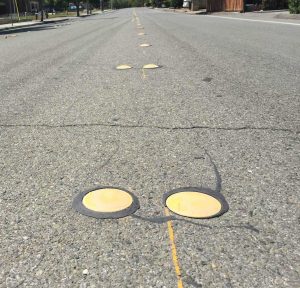
This summer, the city of Cupertino painted its bicycle lanes bright green to make them more visible to drivers and safer for bicyclists. The cost was $249,000. While the city certainly deserves applause for making an active effort to make the routinely chaotic trips to school safer for cyclists, more action must be taken. On its own, painting the lanes green simply doesn’t offer adequate safety for bikers.
Of course, painted bike lanes do have tremendous benefits. The vibrant color causes drivers to pay more attention to cyclists. According to an article by Mercury News, a report concluded that after painting select bicycle lanes in Portland, Oregon, road safety increased significantly—the number of motorists in those areas that yielded to cyclists jumped from 72 to 92 percent, and the number of drivers that then slowed down for cyclists increased from 71 to 87 percent.
As comforting as these improvements may seem, it is still not enough. A study on Portland cyclists found that while cyclists in an urban or suburban street felt a comfort level of 2.2 (on a 1 to 4 scale) riding on painted bike lanes, they felt a comfort level of 3.2 riding on bike lanes physically separated from traffic by curbs. It is important that cyclists feel safe on the road, and clearly, painted bike lanes alone do not offer sufficient comfort. A memorandum from Howard Wolfson, counselor to former Mayor of New York City Michael Bloomberg, stated that when bike lanes in New York City were physically separated, accidents for drivers, bikers and pedestrians fell by an average of 40 percent. This study shows that more improvements aside from painted bike lanes make a significant increase in safety.
We cannot settle knowing that there is still a chance, regardless of how small it is, that some drivers will not slow down for bikers, especially during the early morning rush for school. We must strive to maximize safety for bikers, which can be achieved through adding enhancements to the road. Installing Botts’ Dots—plastic, semi-spherical pavement markers that drivers can feel when driven over—alongside bicycle lanes makes for a viable option. If installed, Botts’ Dots would let drivers feel that they are going into the bicycle lane and prevent potential collisions with cyclists. Plainly painting the bike lanes green is only a reminder for where the bike lanes are; it cannot prevent careless drivers from intruding upon the bike lane, but Botts’ Dots can increase the chances of stopping reckless drivers.
As a matter of fact, we already have a plan for installing Botts’ Dots that is ready to use. In the 2014 TED project contest, a team of Monta Vista students designed a $1,000 plan for planting Botts’ Dots around the city. Though people supported the idea, it was not the winning proposal. Now that we are more aware of the importance of road safety, it would be smart and convenient to finally implement that plan.
Solutions besides putting in Botts’ Dots include separating bike lanes with curbs, teaching safe cycling and driving practices, enforcing stricter speed limits around busier areas and fining drivers who are caught going into the bike lane. These changes would make drivers more careful. Individuals must learn to change their mindsets about biking—they should treat bikers with equal attention as drivers, and instead of bikers and drivers viewing each other as dangers or annoyances, they must learn to share the road and accommodate for each other’s busy commute schedules. These mindsets can be taught through school, campaigns and city signs.
The green bicycle lanes are a great start, but we must not feel satisfied enough to stop here. The city should continue to make changes to increase road safety—it’s a never-ending process of improvement.
Reported by Kingsley Wang and Sebastian Zhang







